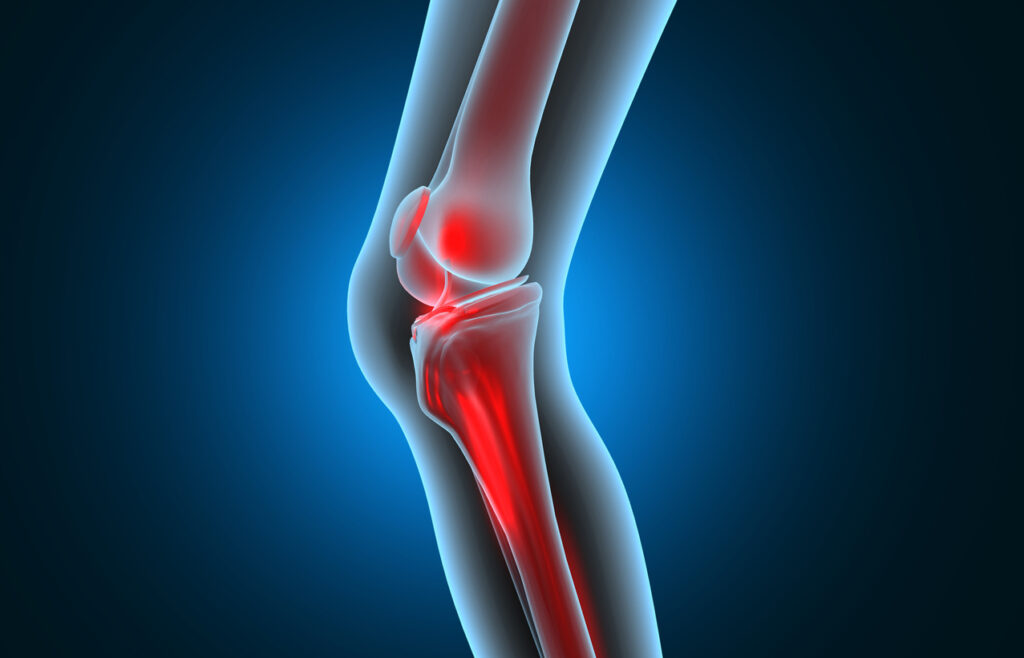Now Offering Florida OrthoCare Telemedicine Virtual Visits

There are 2 cushiony pieces of the cartilage connecting the femur and the tibia of each leg. This cartilage is called a meniscus (plural: menisci), and it is present in a pair in each knee joint. A meniscal tear occurs when the knee joint experiences a sudden, sharp movement. At Florida OrthoCare it is important that patients we treat have a clear understanding of how its best for treating meniscal tears.
Because of the pressure and weight placed in the knee, the meniscus becomes progressively weaker, the older you get.
Meniscus tears are particularly common among sportsmen and women, sports that involve constant ‘stop-and-go’ movement being the most affected- American Football, Soccer, Volleyball, Basketball, and Tennis, some of the main culprits.
Lifting heavy objects, dancing, anything that places pressure on your knee joints can cause a meniscus tear. Mundane acts like jumping up in excitement and landing awkwardly on one leg can cause a meniscus tear. Over half a million meniscus tears occur in the USA every year.
A meniscus tear is diagnosed by a doctor combining physical exams, a knee X-ray, an MRI, and an Ultrasound. In complex cases your orthopedic doctor may perform a minimally invasive test, an arthroscopy to examine your knee joints more closely.
Meniscal tears can be treated conventionally with the RICE routine and pain management therapy. The RICE routine is:
Nonsteroidal anti-inflammatory drugs (NSAIDs) may also be prescribed to combat the pain and help reduce the swelling and inflammation around the joint.
Having an arthroscopic surgery may be the way to go if the tear of the meniscus is complicated, or the pain does not reduce after conventional treatment. The surgical procedure involves only a tiny incision on your knee, from which the orthopedic surgeon will attempt to repair your damaged meniscus. The surgical procedure generally lasts around an hour. And most patients are discharged on the same day.
After surgery, you will be fitted with either a brace or crutches for up to 6 weeks, to avoid placing weight on the healing cartilages. It is recommended that you start physical therapy within a week of having surgery. The average recovery period for a meniscus tear is between 6-8 weeks. however, this is also influenced on your individual condition.
What You Need to Know About Back Pain
If you’re seeking treatment for low back pain through orthopedic and physical therapy services, consider contacting one of our numerous South Florida orthopedic centers. Our team will begin by diagnosing the root cause of your back pain and then tailor a personalized treatment plan to address your specific needs. While aging may bring challenges, rest assured that living comfortably is still within reach.
There are different types of injuries that affect the tendon. Tendinitis is inflammation of the tendon. Tendinosis is when tiny tears occur in the tissue in and around the tendons. This is usually caused by overuse.
When to Spin Toward Orthopedic Care After a Bike Fall
When to Seek an Orthopedic Evaluation After Falling Off a Bike at Spin Class Spin classes have gained immense popularity as an …
Continue reading “When to Spin Toward Orthopedic Care After a Bike Fall”
Copyright ® 2024 www.florthocare.com. Designed by Accountable Web Designs. Privacy Policy | Terms and Conditions | Sitemap